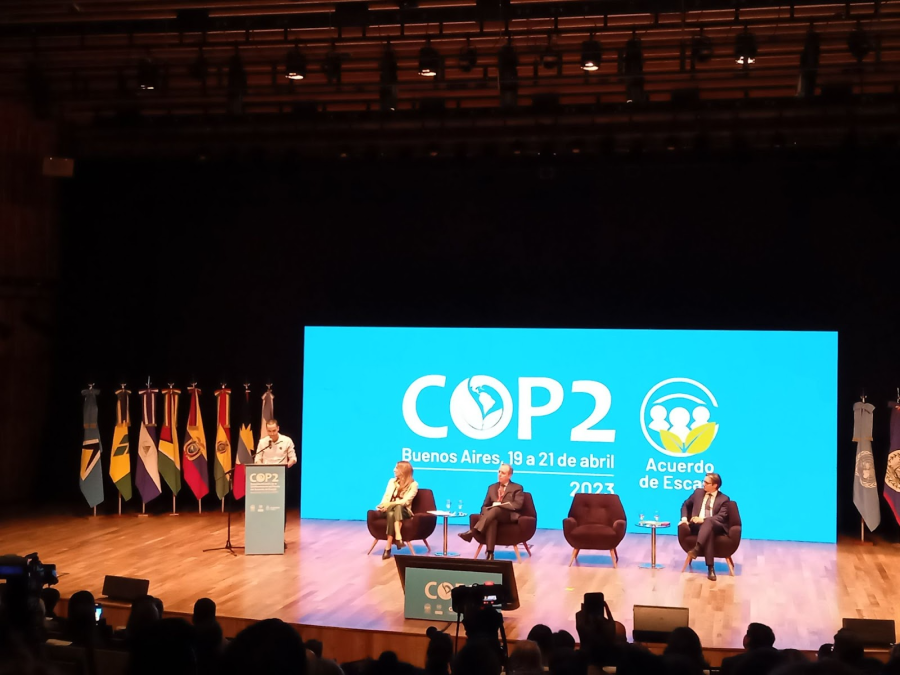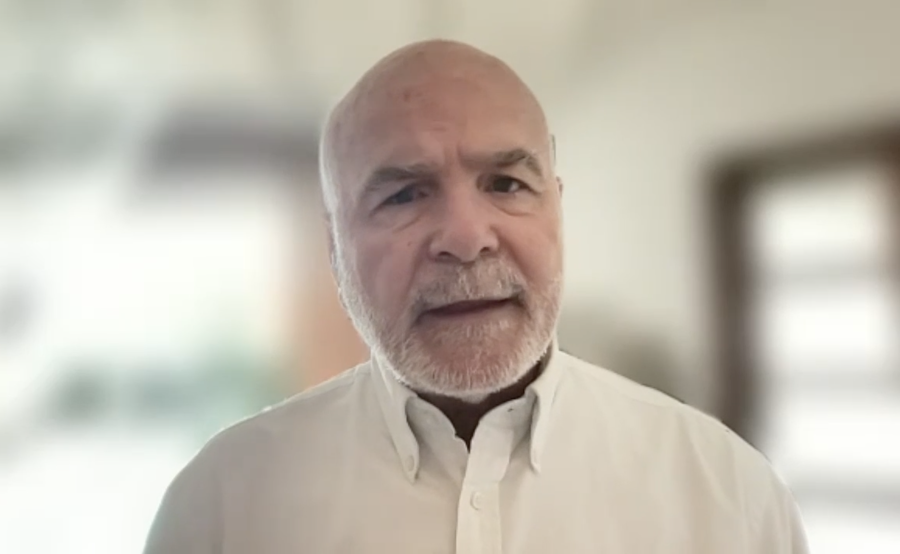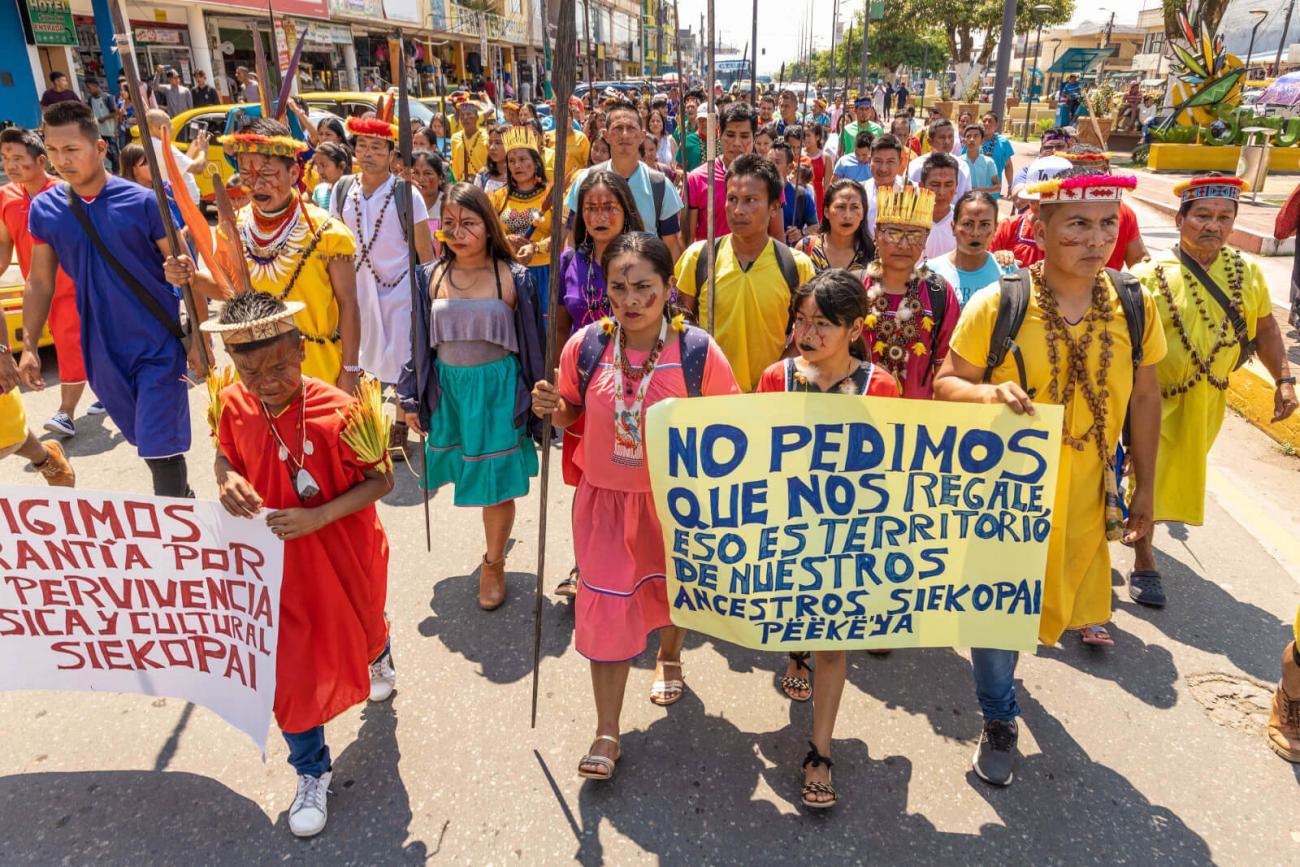
Demarcation of ancestral lands is a crucial factor for Indigenous Peoples’ survival worldwide. Indigenous territories offer communal protection of the people living there and are essential to food sovereignty. They are also a protection against cultural extinction, as ancestral land cannot be separated from Indigenous Peoples’ past, present, and future. For the Siekopai Peoples of the western Amazon along the Ecuador-Peru border, the meaning of Pë’këya, their ancestral land, is no different.
Pë’këya is the spiritual center of the Siekopai and the core of memory and knowledge. Siekopai cosmology and culture are rooted in Pë'këya, in which the land holds the knowledge of the practice of protecting, nourishing, and learning from it. Pë’këya contains the cultural memory of the people, and for centuries, Siekopai families have shared this knowledge with one another—a practice that has formed an intimate knowledge of the history of each and every relationship and interaction between all living beings.
Pë’këya is intimately related to other sacred sites of the Siekopai people, including the Ñañë-Jupo, a waterfall where their God, Ñañë-Paina, was said to reside, and the Ñañë-Siekopai (mythical beings) that pass on Siekopai culture from generation to generation, enabling the Siekopai to feel, think, and act accordingly with their culture and give meaning to their life. Don Cesario Piaguaje, a 112-year-old Siekopai traditional leader and shaman, explained to Amazon Frontlines: “Pë’këya is the most sacred part of the territory, it holds my umbilical cord and the bones of my father, my mothers, and my grandparents. There I started the trails of the journey towards the full wisdom of the Siekopai, undisturbed, until the first intruders and strangers came to our lands to spread terror and diseases.” Justino Piaguaje, another Siekopai leader, told Amazon Frontlines, “[Pë’këya] is our territory, our blood, our birthplace, the basis of our worldview.”
Since 1941, as the Ecuador-Peru war broke out, Pë’këya has been split in two by the heavy militarization of the area, separating Siekopai families and threatening their ancestral traditions connected to the area and local wildlife. The war and the sudden creation of a rigid border had a massive impact on the borderless existence of the Siekopai. Both sides accused the Siekopai of being spies, and many Siekopai were forced to flee their homes far from the territory, plants, and animals that had given them life and wisdom for centuries. Some who were separated by the militarized border were able to reunite after decades, but many others would never see each other again.
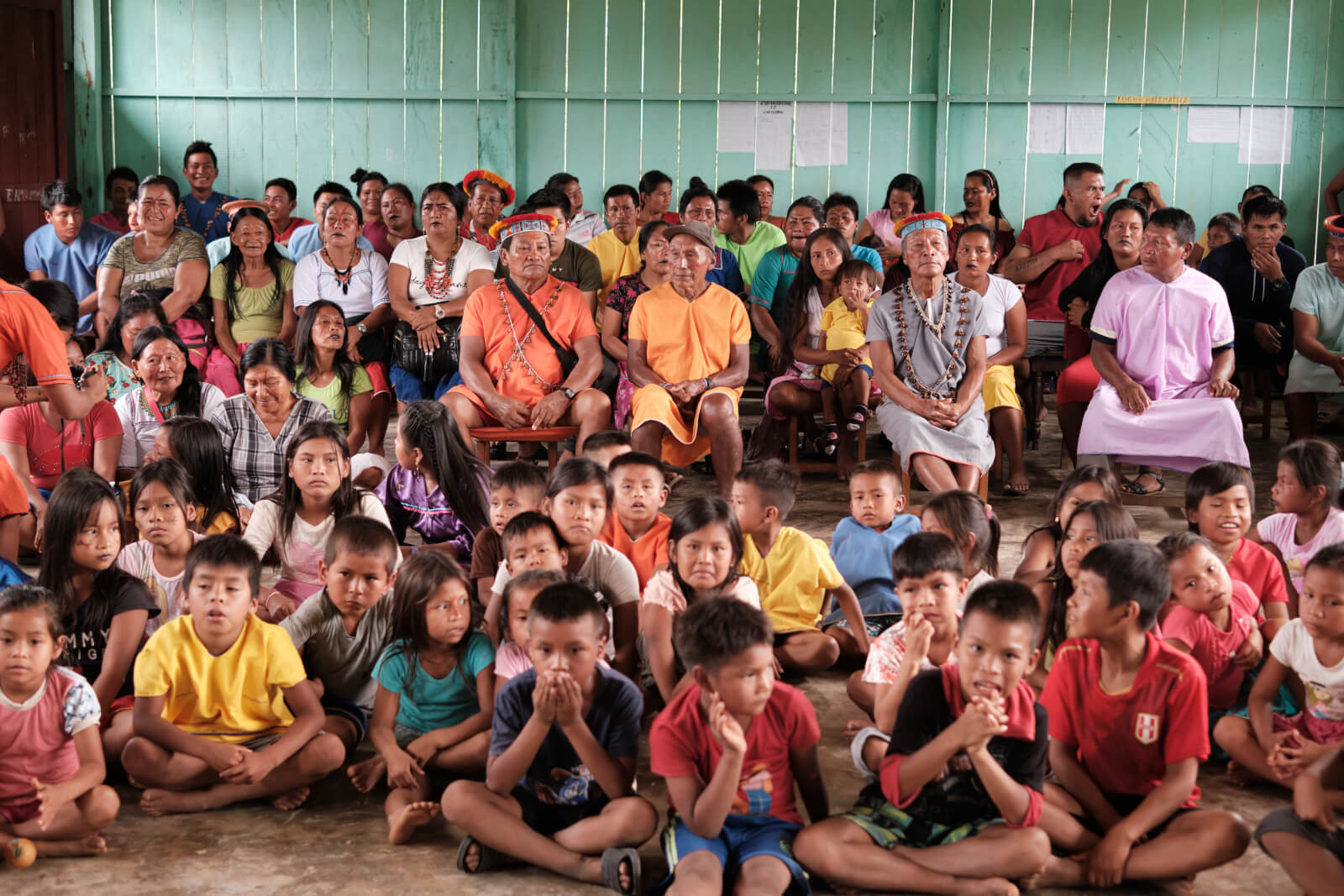 For the new Siekopai generation to rediscover Pë’këya and lost spiritual and cultural bonds, hundreds of Siekopai from both sides of the Peru-Ecuador border gather together for a reuinion after decades of war in the region.
For the new Siekopai generation to rediscover Pë’këya and lost spiritual and cultural bonds, hundreds of Siekopai from both sides of the Peru-Ecuador border gather together for a reuinion after decades of war in the region.
Don Cesario Piaguaje described the serious threat of cultural extinction facing the remaining Siekopai, who now number around 700, due to assimilation efforts and displacement from colonization and war. “It’s vital, the sacred territory of the Siekopai in [Pë’këya], for young people to not stop being Siekopai and so they continue transmitting our culture from generation to generation. It is the territory chosen by our God Ñañë-Paina,” he said to Amazon Frontlines.
With the establishment of the Cuyabeno Wildlife Reserve in the northeast Ecuadorian Amazon in 1979, Siekopai sovereignty was threatened again; when the Reserve was expanded to include Pë’këya in in 1991, the Siekopai lost even more control over how the territory was being managed and conserved. The Siekopai have requested since 1992 for Pë’këya to be returned to them, but the Ecuadorian state has consistently refused to recognize Pë’këya as ancestral land belonging to the Siekopai. Since the war ended in 1998, Siekopai families have tried to return to their ancestral home despite the prevalent risk of abuse and detention from military authorities.
Wilmer Piaguaje, a Siekopai youth, discussed the negative generational impact of being forcefully separated from one’s ancestral territory: “Pë’këya is the soul of the Siekopai…There is everything that is important for a Siekopai person…that territory has power and value for what’s in it. Many stories I grew up with are from there and they are not only story, they explain who I am as a person and what my family is…I was denied the right to live there, and I see my children grow without understanding what it’s like to be a Siekopai, without a Siekopai soul because the soul is there,” he told Amazon Frontlines.
Andrea Payaguaje, a 12-year-old Siekopai youth, concurred, telling Amazon Frontlines that “our ancestral territory is so important to us. I want to return to live in that territorial space that my grandfather was always connected to. My grandfather is no longer with us, he is no longer with me, and he wasn’t able to return; he died fighting to return. I want to say: give us back this territory so that we can continue existing as Siekopai.” Formal demarcation of Pë’këya is more crucial than ever for the survival of the Siekopai, and for the youth to truly understand what it means to be Siekopai.
For decades, Ecuador has designated thousands of acres of Indigenous ancestral land as protected areas without the consent of the Indigenous communities to whom these areas are connected. In 2017, the Siekopai formally asked the Ministry of Environment, Water and Ecological Transition to grant them land title over Pë’këya. However, they were met with years of government inaction and excuses, such as the claim that the Ecuadorian government lacked technical capacity to execute ancestral property title deeds. According to international and Ecuadorian law, ancestral territories should be in the possession of Indigenous Peoples; therefore, excuses relating to lack of technical capacity are invalid and cannot justify ongoing human rights violations, including the refusal to recognize Pë’këya as Siekopai land.
Due the Ministry’s inaction and the fact that the Ecuadorian Ombudsman sided with their land claim, the Siekopai filed a lawsuit against the government in September 2022 in an effort to have Pë’këya formally demarcated and to denounce the human rights violations committed by the Ecuadorian government for failing to formally recognize their land claims. On May 30, 2023, the first judicial hearing was conducted on Siekopai territory as a part of the lawsuit. The outcome will determine the future of the Siekopai people and their claims to ancestral lands.
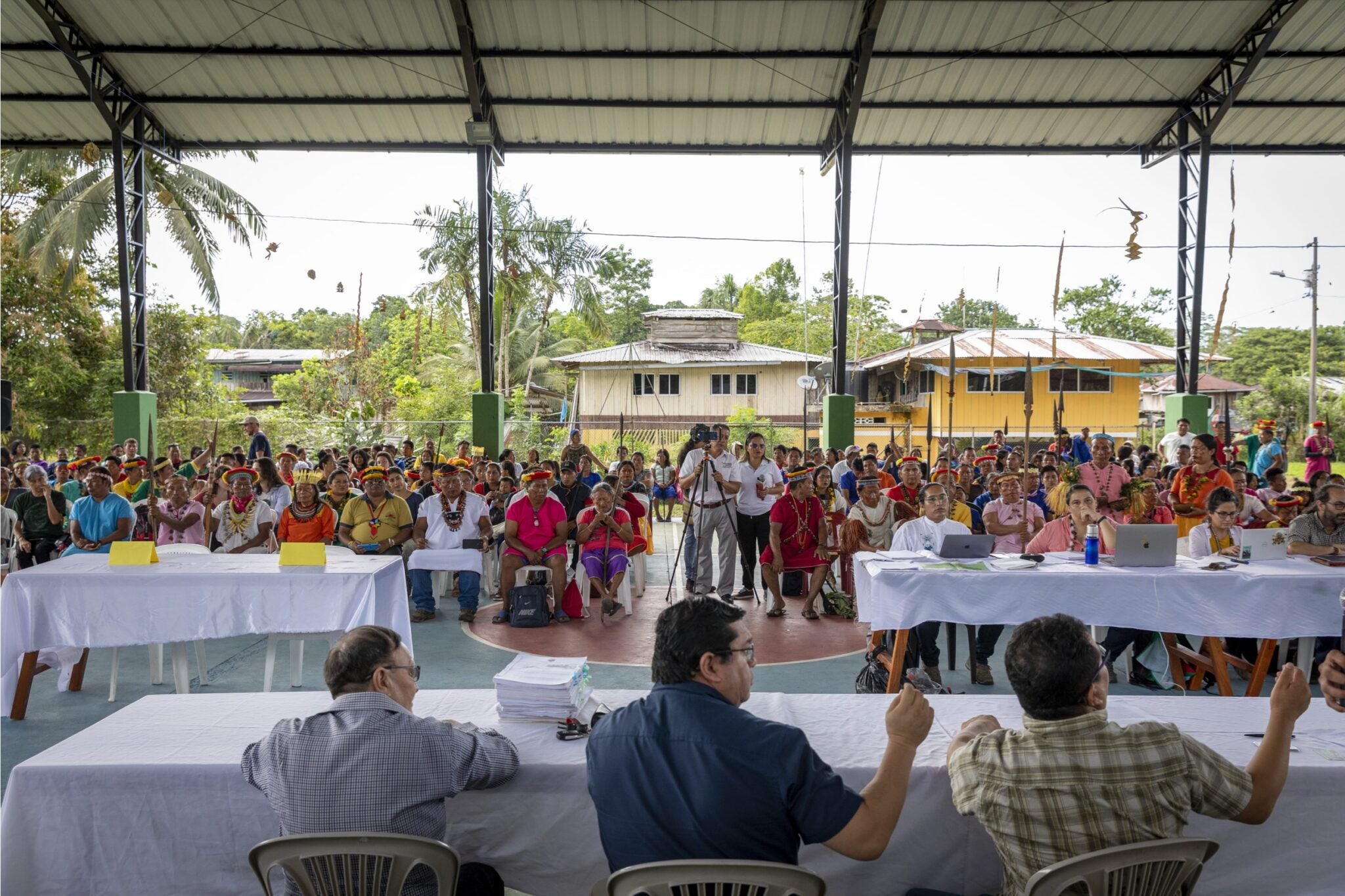 The three-judge panel listening to Siekopai elders and youth's testimonies about the significance of Pë’këya to the Siekopai people.
The three-judge panel listening to Siekopai elders and youth's testimonies about the significance of Pë’këya to the Siekopai people.
Since colonization, Western conceptions of laws, including formal property laws, have guided people's relationships with land and territory and made judicial proceedings and protection the only means by which Indigenous Peoples can protect their ancestral territory, livelihood, and cultures. However, such proceedings are foreign to their cosmology in their regard for nature as a commodity to be owned, rather than a vibrant ecology to be stewarded. Alfredo Piaguje, Siekopai grandfather, told Amazon Frontlines, “We are not fighting for a quantity of lands—it’s the area, it’s the place, it’s the spirit, it’s what someone as a Siekopai person can feel being there that doesn’t happen anywhere else, only there can a Siekopai feel free.” Maruja Payaguaje explained that fighting for formal land titles “is not a problem of lands, not of where to go live, it’s a question of spiritual essence...from [Pë’këya] we weave our relationship to other Peoples.”
Formal demarcation of ancestral land is critical for the survival of Indigenous Peoples and their culture. Land titles bring judicial protection from third parties such as extractive industries, and the right to territory encapsulates fundamental human rights, including the right to life, the right to food, and the right to cultural practices. Formal demarcation allows Indigenous Peoples to revitalize a way of life and culture oppressed by colonization and sustain it for generations to come. Demarcation of Pë’këya and other ancestral lands in the Amazon region in particular is crucial to protecting precious biodiversity and combating climate change, since the Amazon also functions as one of the world’s largest carbon sinks.
NGOs working closely with the Siekopai people expect new developments in the case later this summer. As Yadira Ocoguaje said to the three-judge panel on May 30, “Our struggle isn’t for a piece of land, but for the guarantee to continue living as Siekopai. We are asking you to return this land, which is the origin of the Siekopai culture.”
Photos courtesy and quotes of Amazon Frontlines.
